Stealth is the key to success when fishing shallow or very clear water.
Although walking or wading such areas can offer good vision, sometimes access problems, a muddy bottom or even cold water can impede progress. Sitting in a kayak quickly cures these problems.
I sometimes stand up in my kayak to stretch my legs and it’s amazing how often the first thing you see is fish darting off in every direction!
Standing and fishing certainly offers good vision but you become highly visible yourself and while drifting along you may get close, once a casting stroke is made a similar problem often occurs and you often see fish flee.
There’s been enough said about the visual component of catching a fish in skinny water or the detonation of a surface strike.
Sitting low in a kayak has such events happening mere metres away! It really brings the game up close and personal!
Watching a group of bream nudging your lure and being able to make subtle rod movements to entice them gives an insight into fish behaviour not often experienced so close at hand.
Tackle requirements include all the latest finesse gear – reels with reliable, smooth drags are essential, as is a rod capable of flicking a 3g lure a workable distance yet with the low-down grunt to pull up a thug of a bream.
Leader size and type will be dictated by conditions and methods employed.
Fishing small surface lures, a short, stout leader of normal monofilament is best. About 50cm of 6kg nylon can give you a fighting chance of retaining your lure when flathead or longtoms get in on the act.
Sub-surface offerings are often presented on lighter lines, with fluorocarbon leaders preferred by most these days.
Lures are often high-end, boutique-style and priced accordingly. Diverse subtleties such as buoyancy, action and size will dictate their use.
Used correctly and thoughtfully, these lures quickly amortise the cost of such luxuries with their wonderful performance and fish-catching ability.
While lures across the shallow flats are limited to those that swim in less than 50cm of water, the selection can be quite broad, especially once you throw in the huge array of surface lures.
Often lures are designated with letters and numbers which often describe lure length and characteristics such as sinking or floating. A simple 27S will probably be 27mm long and sinking.
Recognising this coding will help when it’s the only English writing on the package and you’re about to spend $25 on a single lure.
Experience is your best asset when choosing a lure. Being able to judge swimming depth by looking at the lure size, bib shape, size and angle is a talent that grows over time.
There is always leeway built in to swimming depth by using a high rod tip. Asking the sales person should assist further. Questions such as, ‘does it have a pedigree on local fish already?’ are a good start.
So you are now set with rods, reels, leaders and lures, it is time to find some water.
The great thing about flats fishing is you get very few boats around, if any, in the truly skinny stuff. No boat owner wants to be left high and dry for a whole tide should they judge it wrong!
Locations often are areas previously overlooked because of earlier naivety as to what swims over them.
Flats to look for can be anything from a shallow margin along the inside edge of a large sweeping bend upstream to the vast flats found in the middle and lower broader sections of larger estuaries.
Locations where small feeder creeks spill into the lagoons that are closed to the ocean are also prime. Once you start looking for shallows or flats, you will find them everywhere!
The next thing to look for is habitat. Seagrass beds with areas of muddy shell grit reveal reasons for larger fish to be there. Melon holes made by sting rays feeding on molluscs, indeed feeding stingrays themselves, are all points of interest for fish and anglers.
Shallow water isn’t always clear, either. Dirty outgoing tides can increase concealment for angler and fish.
Fishing a clear incoming tide has its own drawbacks.
In some locations such as enclosed coastal lagoons, best fishing can depend more on the sun than the tide. Early and late in the day are the principal hunting periods in Summer, although during the cooler months or when dense cloud provides good cover for feeding fish there may be a longer window of more subdued light.
It is worth remembering that fish found on flats or in the shallows are either hunting or hiding from hunters.
Shallow water puts even good-sized fish like big bream right in the firing line of sea eagles and even bull sharks.
Bream and whiting will be moving in schools, sweeping through and pausing only briefly to snap a feed.
That is not to say they cannot be diverted into chasing an opportunity. Such interest in an opportunistic feed often turns competitive between numbers of fish. This can be your best chance for a hook-up!
The water over large flats can indeed be billiard-table flat itself. During such times it will pay to spend some time watching for signs of fish feeding or moving.
Prawns hopping along are a key giveaway; skipping baitfish are another. Larger fish will be conspicuous by their bow waves as they push through the narrow water looking for food.
Casting to intercept fish is the key; try not to cast behind the fish, rather to the side.
Surface lures can be ideal for gaining attention but a little more skill may be required to convert lookers into a hookers.
Fishing the estuary flats is a safe, exciting and productive way to search vast areas of open water that are often overlooked. Get out there!
Reads: 4076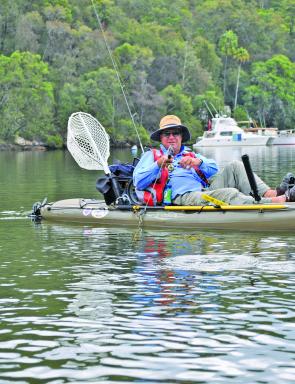
Garry Cooke gets in some practice on the flats between competitions. Many competitive anglers have recognised how abundant fish can be on the flats.

Matt Hickson fished a small minnow over the flats with a drift-and-twitch technique. Suspending lures are ideal for a slow jerk, pause and twitch technique.
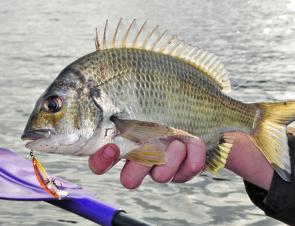
The more subtle presentation of clear lures is often preferable when the water is crystal-clear.
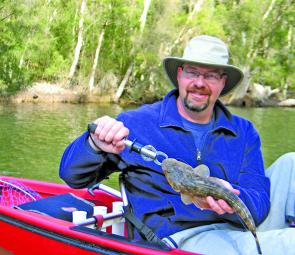
You can expect plenty of small to middling flathead when fishing the flats.
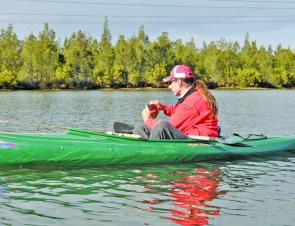
Jamie Robley reckons flats fishing in kayaks is one of the most challenging and exciting forms of fishing.
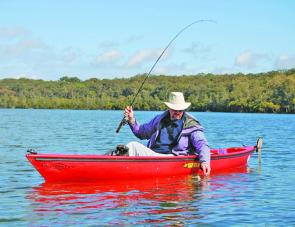
The author’s Native Water Craft Propel kayak is ideal for fishing the flats. With the prop down it draws less than 30cm, offering great hands-free control when the tide starts to push hard and fish begin to feed.
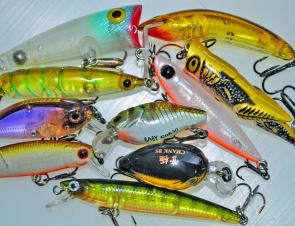
Some lures from the author’s grab-and-go flats box. Not too many, but a variety of shapes, styles and behaviour of lures to cover the spectrum of shallow-water fishing.
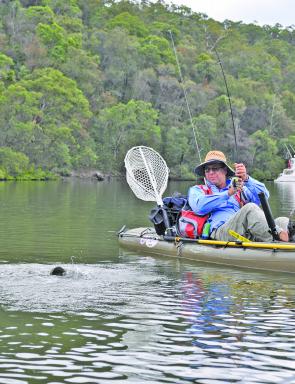
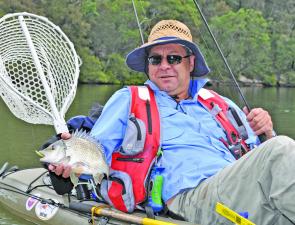
Garry Cooke with a typical flats bream caught on a surface lure.
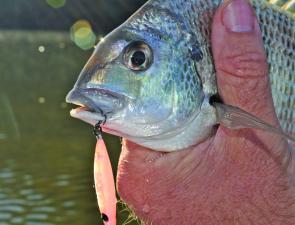
Subtle manipulations of this Smith Towadi surface stickbait were required to entice this little fella. Watching it all unfold mere metres away makes it worthwhile.
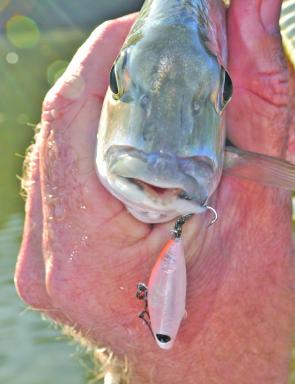
The protruding eyes of wary bream give them good peripheral vision. Keep this in mind when casting your lure to cruising or feeding fish. Aim to intercept from the side if possible.
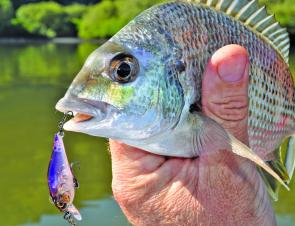
If the bib is small enough, you can fish slow sinking lures successfully in very shallow water – use a high rod tip on retrieve. This time it was an atomic Hardz Shad 40.

A compact lure with a single treble hook casts well and is ideal for probing the shallows. The buoyancy in this River 2 Sea Baby Crank 30 makes it very usable over the flats.

Small stickbaits are such as this Ecogear MX48F are ideal bream fodder when fish are feeding with their backs out of the water.
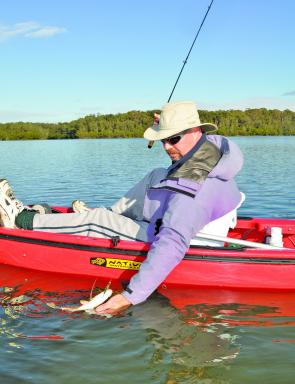
If you like wide open spaces all to yourself you will like flats fishing in a kayak. The author brings another shallow-water bream to hand.




